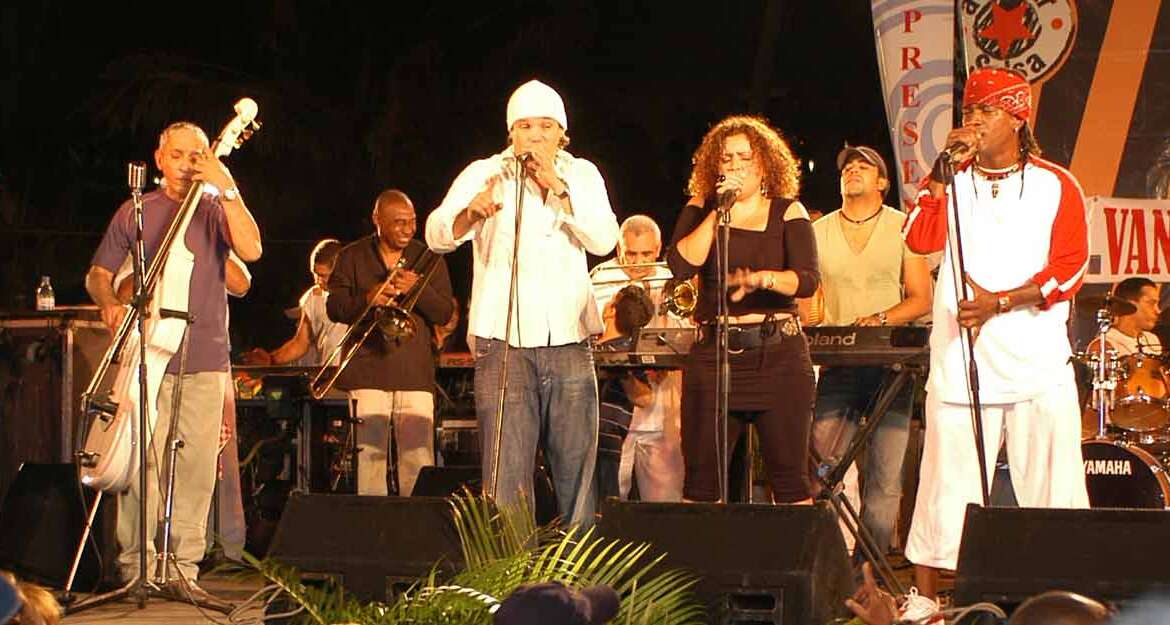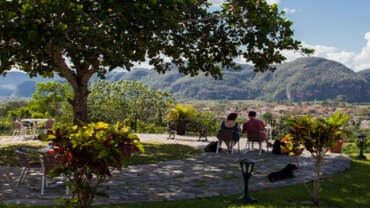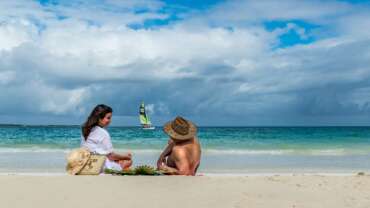Experiences in Cuba
Golf in Cuba
Golf made its first appearance in Cuba between 1910-1920. The first demonstrations were made by American amateur players, who had settled on the island after the intervention of 1898 and the establishment of the Republic in 1902.
The development of golf and the real estate agencies associated to this sport are a strategy to boost the development of the tourism in Cuba.
However, there are only a few golf courses in Cuba. The most popular ones are the Varadero Golf Club and the Havana Golf Club.
Every year there are international competitions with open registrations, such as: Tournament of European Commonwealth (April), Canada Cup (April), Africa Day (May), Festivities of Indonesia (August), Hispanity Day (October) and the Year End Tournament (December).
Events, Fairs and Festivities in Cuba
Cuba possesses many attractions that encourage cultural encounters, that’s the reason why it is one of the most chosen countries to celebrate events, fairs and festivities in the Caribbean.
Culture, education, health and biotechnology are some of the themes that turn the destination into a perfect setting to schedule events and encounters in Cuba.
We put at your disposal several conference centers, fairgrounds and halls with wide-range-communication facilities and high prepared staff that guarantees the success of knowledge sharing, art, science and the enjoyment of a diverse culture.
Health in Cuba
The health system in Cuba is generalized and backed by the most advance techniques, applied by highly qualified staff in an extensive network of hospital institutions of well-known capacity.
Unique proposals to confront diseases like the pigmentary retinopathy or diabetic foot and a complex scheme of vaccination are also among the health options in Cuba.
Programs and unique procedures lead visitors to a differentiated and responsible treatment that is offered though clinics, optics, drugstores and medical institutions distributed from east to west in Cuba.
The possibility of academic exchanges and the enjoyment of the natural wealth in order to improve the quality of physical and mental life are also other options that boost health tourism in Cuba.
Nature of Cuba
The tropical, humid and semi-continental climate of Cuba gives it a natural diversity that is reflected in its regions. Cuba’s nature is made of coastal, mountains, semi-deserted ecosystems; plains, rivers, caves and valleys paint the Cuban geography with multiple colors. National parks, botanic gardens, heritages, protected areas are populated by a colorful flora and fauna, with a rich history in every species.
Bird watching, hiking, diving, sports fishing, outdoor horseback riding, caving, mountain biking or rural tourism, are some of the multiple options that the tourist destinations of Cuba, depending on their potential, offer to the visitors that seeks direct contact with nature.
Nautical activities in Cuba
Clean and transparent beaches, beautiful seabeds, tours, water sports and marinas with a variety of services; form Cuba’s nautical product.
More about Cuba’s nautical product
Cuba has 588 kms of crystalline beaches, where you can swim in its warm waters and practice water sports.
You can also enjoy sea excursions, small trips, safaris, life on board and fishing, which can be booked with different tour operators, nautical points and snorkeling and diving centers.
Sportfishing, is a very demanded activity, for which events are organized or performed by small groups, as it is ideal for fishing bonefish, snook, tarpon and doves.
Excursions in Cuba
To really get to know Cuba you need more than just staying in a hotel, you need to complete your stay with visits to local places, know the folklore and customs, live the music and dances, taste its dishes and typical drinks, explore the history, nature and cultural places, practice sports and outdoor activities and visiting its restaurants and bars outside the hotels.
For it there are tours, rides, circuits and excursions around the different tourist destinations of the island. These tours in Cuba not only vary depending on the destination, but also depend on the different tourist modalities that the archipelago offers. These excursions also respond to the preferences of the potential and real visitors. Those will be able to choose between activities and city tours, culture, nature, sun and beach, nautical and golf.
The City
The City is the reference par excellence of the culture of a region or nation. There are cities with labyrinth-like or open streets, noisy or silent; marine, mountain-like, big metropolis or small towns that create mysteries, legends and secrets. Each and every one of them hides or shows its magic to the visitors. It all depends on who’s looking, seeking or just watching.
In Cuba, styles as diverse as the cultural branches that form it blend in the architecture of plazas, parks and buildings that tell the history and show the patrimony.
Primate cities, monument cities, heroic cities are discovered and one can come close to Historic Centres recognized by the UNESCO, fortifications built to defend themselves against the pirate and corsair attacks.
Emblematic theatres, cathedrals, museums, movie theaters, bookstores and galleries; nightclubs, recreational, gastronomic places are settled among houses and inhabitants that are represented even in the smallest details painted by time.
Cuba is its city and the people that makes it; it breathes, moves and lives in it and from the cape of Santa Antonio to the peak of Maisi, it invites to discover it.
The Cuban Culture
The culture of Cuba is one of its biggest assets. Diverse and mixed, it takes part in the identity of the Cuban and in the construction of the nationality.
Over five centuries of history accumulated unmatched richness of oral tradition and artistic manifestation that, along with symbols, representative figures and diverse cultural spaces, make Cuba much more than just an island in the Caribbean.
Marked by varied influences, Cuba not only has the tobacco, the coffee and rum, but also tangible and intangible values that attract the visitors because of their essence, diversity and colors.





